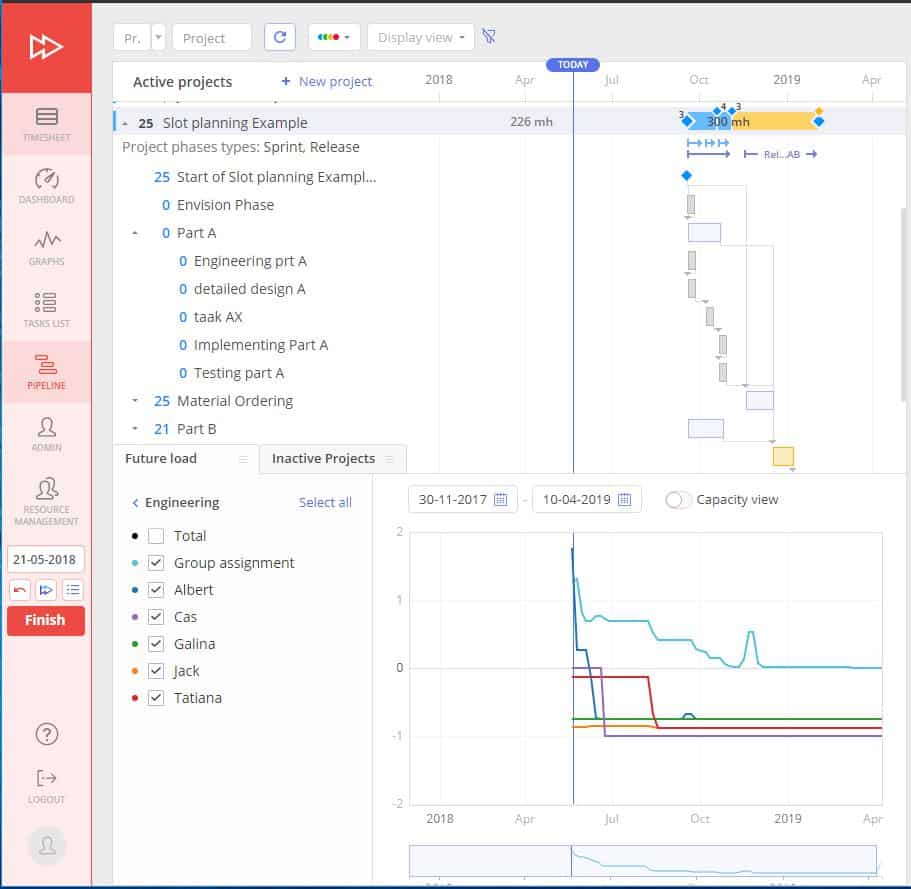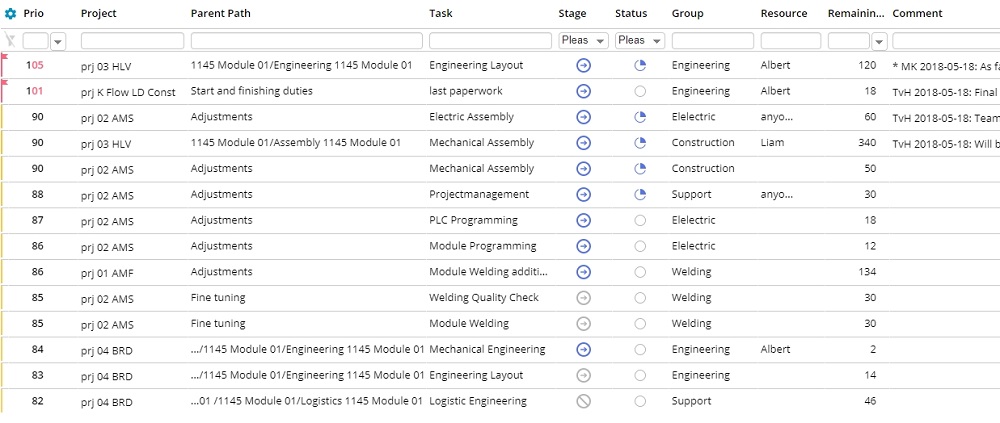Scope creep is a common challenge that project managers have to deal with. In an effort to make the project’s final outcome perfect and satisfy customers, project managers/team members/stakeholders may be unable to leave it well enough alone. This results in making too many or too significant changes to the project until its scope goes far beyond what was agreed upon initially. Why is it dangerous for the project? How not to lose control of the situation? Let’s consider these issues in detail.
What Causes Scope Creep?
Scope creep is defined in the PMBOKGuide as the uncontrolled expansion to product or project scope without adjustments to time, cost, and resources. In other words, it’s about doing extra work that hasn’t been included in the scope of a project. For example, it can happen when senior managers want to satisfy customers at any cost and are afraid to decline their endless requirements, even if there aren’t enough either human or material resources to implement them. There can be several causes for scope creep.
Changing requirements
Uncontrolled changes to project requirements are considered as the major cause for scope creep. In fact, making changes to a project in the course of its implementation is inevitable, as the project team together with stakeholders and a project manager always do their best to make sure that the final outcome meets the customers’ expectations. However, problems arise when these changes aren’t managed properly. Sometimes, customers or stakeholders who want to change something in an ongoing project simply don’t realize what consequences for the whole project these changes will bring. So it’s a project manager’s responsibility to handle these requirements and changes properly to keep the project under control.
Read more: Changing Requirements in Project Management: How to Stay on Track
Poorly defined project scope
A lack of the detailed plan with clear goals and requirements along with clearly defined project scope is the other source of scope creep. If the project participants don’t have a clear vision of project scope, there will be more chances for exceeding it.
Poor communication
Poor communication usually leads to a great number of problems: without getting everyone on the same page in terms of requirements and expectations, it’s really difficult to deliver a project successfully. In turn, a lack of clear requirements and realistic expectations obtained in the process of communication with team members, clients and stakeholders can result in scope creep.
Inability to say “No”
Sometimes, it’s really important to stop the endless flow of ideas coming from different sides concerning the final outcome of a project. However, a project manager may be afraid of disappointing customers or falling short of stakeholders’ expectations and for this reason accepts any change request without considering the available resources, which becomes one more cause for scope creep.
Consequences of Scope Creep

Scope creep can lead to a great number of negative consequences from a certain amount of rework to even project failure. It affects not only a project manager but also everyone involved in the project and the project itself. Let’s take a look at the consequences of scope creep.
Scope creep is bad for a project as it leads to missed delivery dates, exceeding the budget , and poor quality of the final outcome. When the amount of work that has to be delivered increases, it will naturally require more time and/or budget. Otherwise, the quality of the delivered product will suffer, the delivery dates will be missed, and the costs will be overrun.
As for a project team, scope creep affects them in the following ways.
- The need for completing additional tasks can result in bad multitasking, i.e. the team members will be trying to deliver more tasks, but the quality of these efforts will be poor.
- If they have a lot of additional tasks or are often asked to alter their work, they are likely to become disappointed, lose motivation and trust in the whole process – in other words, they’ll become disengaged.
- Additional work without adjustments to resources and timeline is a direct path to team members’ overload.
It’s important that all these consequences decrease team members’ efficiency and contribute to poor quality of the work done.
Scope creep can become a real headache for a project manager: missed due dates, costs overrun, disengaged and overloaded team, disappointed customers, misunderstanding with stakeholders – this is a short list of problems they will have to solve. If they don’t take any timely measures, they are likely to lose control of the project, which in turn puts their reputation at stake.
Tips on Preventing Scope Creep

Obviously, scope creep is something that should be better prevented. In fact, it’s not about refusing any changes that are proposed by clients or stakeholders, but about making balanced decisions as to the feasibility of those changes. Here are some tips on how to keep the project on track.
Develop a detailed plan
It’s important to begin with a thorough plan that will define the scope of the work to be done along with required resources, project schedule, major milestones, etc. This plan should be agreed with all project participants to make sure that all of them are on the same page and each of them clearly understands their roles and responsibilities in the project. The project plan will be your reference point when you make your decisions concerning changes to the project.
Manage requirements
Requirements management is an important practice that helps your project not to be derailed when the project requirements change. It’s defined by the PMI’s Pulse of the Profession as the discipline of planning, monitoring, analyzing, communicating and controlling requirements. Requirements management is implemented through the following procedures:
- Setting and documenting current requirements,
- Clarifying the consequences of changes,
- Establishing change control procedure,
- Creating a project schedule with the approved changes.
Besides, it’s important that all the project participants are informed about the mechanism of approving any changes to the project and follow it.
Set priorities
Prioritization of tasks is one of the keys to successful project delivery. Knowing what matters most at the moment helps the team members to focus their efforts on highest priority tasks, which in turn prevents them from wasting time and procrastinating. It’s also helpful when some changes are approved or some tasks are added: prioritization of tasks won’t let your team members miss important deliverables.
Communicate a lot
The importance of effective communication cannot be overestimated: it reduces a lot of assumptions and misunderstandings, and makes the work on a project clear and transparent. How can communication prevent a project from scope creep?
- First of all, communication allows a project manager to gather requirements to a project and its final outcome and agree upon them.
- Secondly, it’s important to explain the change control procedure to all the project participants: that will reduce to a minimum the possibility of making unexpected changes.
- Thirdly, good communication promotes trust-based relationships between project participants, which makes it easier to discuss any arising issues (e.g. feasibility of certain changes to the project).
Take advantage of PM software solutions
Project management software makes all this work much easier. Let’s look at Epicflow’s features to understand how PM software works for preventing scope creep.
Make decisions on changes with What-if Analysis

What-if Analysis feature is the basic tool for managing changes to a project: you can see what consequences your current decisions will have in the future. So, you can assess whether the changes proposed are reasonable and worth the effort. Having received any change request, you can try various scenarios in What-if Analysis and make your decision correspondingly. Also, this feature includes the Future Load Graph, which gives a clear vision of how your resources’ load changes over time depending on the tasks assigned to them. It has two advantages: first – you can prevent roadblocks related to resources’ overload, and second – it can help you when making decisions concerning feasibility of changes to the project proceeding from your resources load.
See task priorities in the Task List

This feature not only shows the list of a user’s tasks, but automatically prioritizes them, even for a multi-project environment. What are its advantages?
- The system prioritizes the tasks automatically, so you always see the highest priority tasks on the top.
- If any changes are brought into the system, the priorities will be recalculated again.
- Finally, either team members or a project manager are unlikely to lose control of the work they are doing, which combined with right priorities contributes to overall project success.
These were some of the examples of Epicflow’s solutions for managing changes and preventing scope creep. If you want to learn more, don’t hesitate to ask us.
Have you ever dealt with scope creep in your work? How did you manage it?

